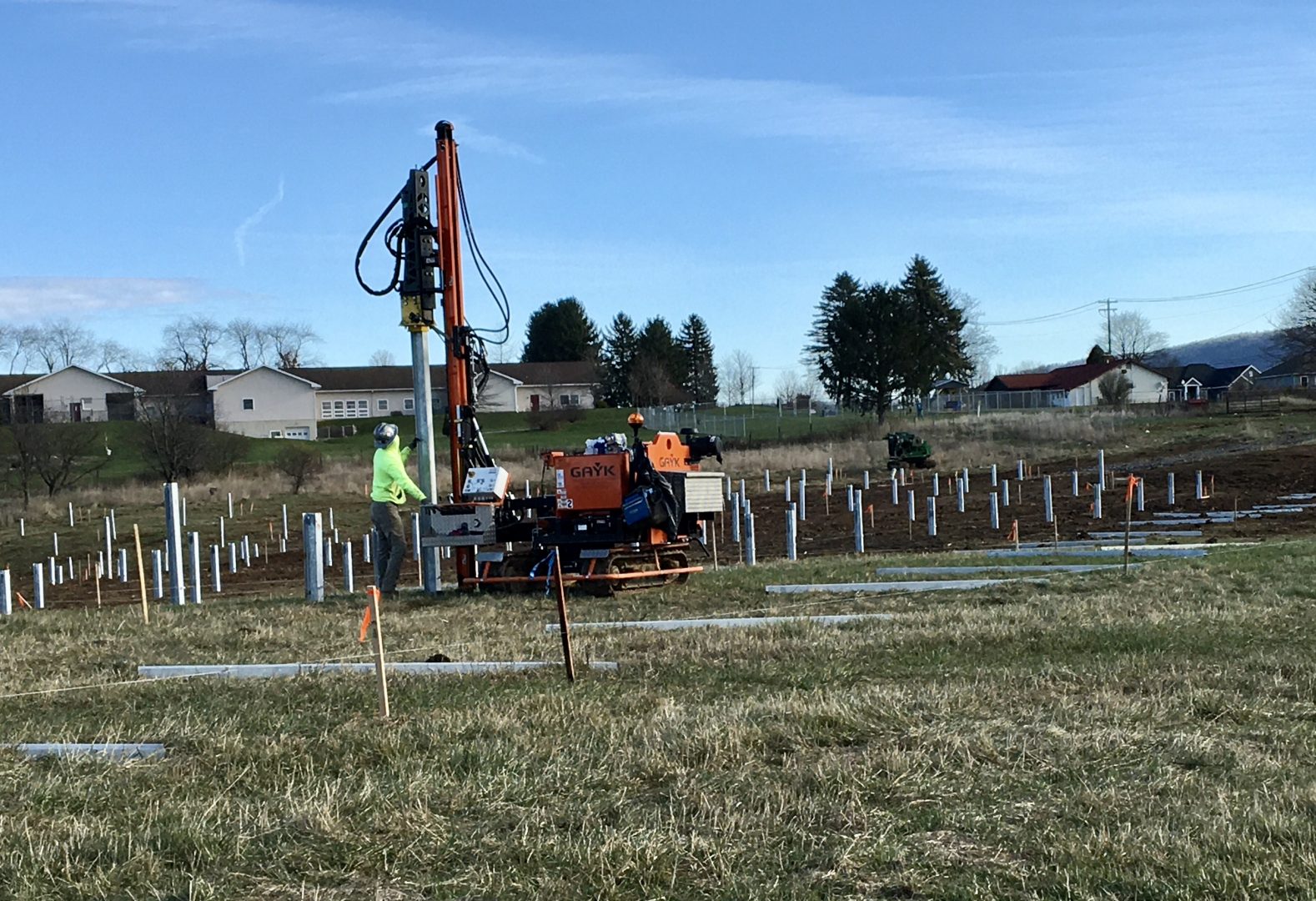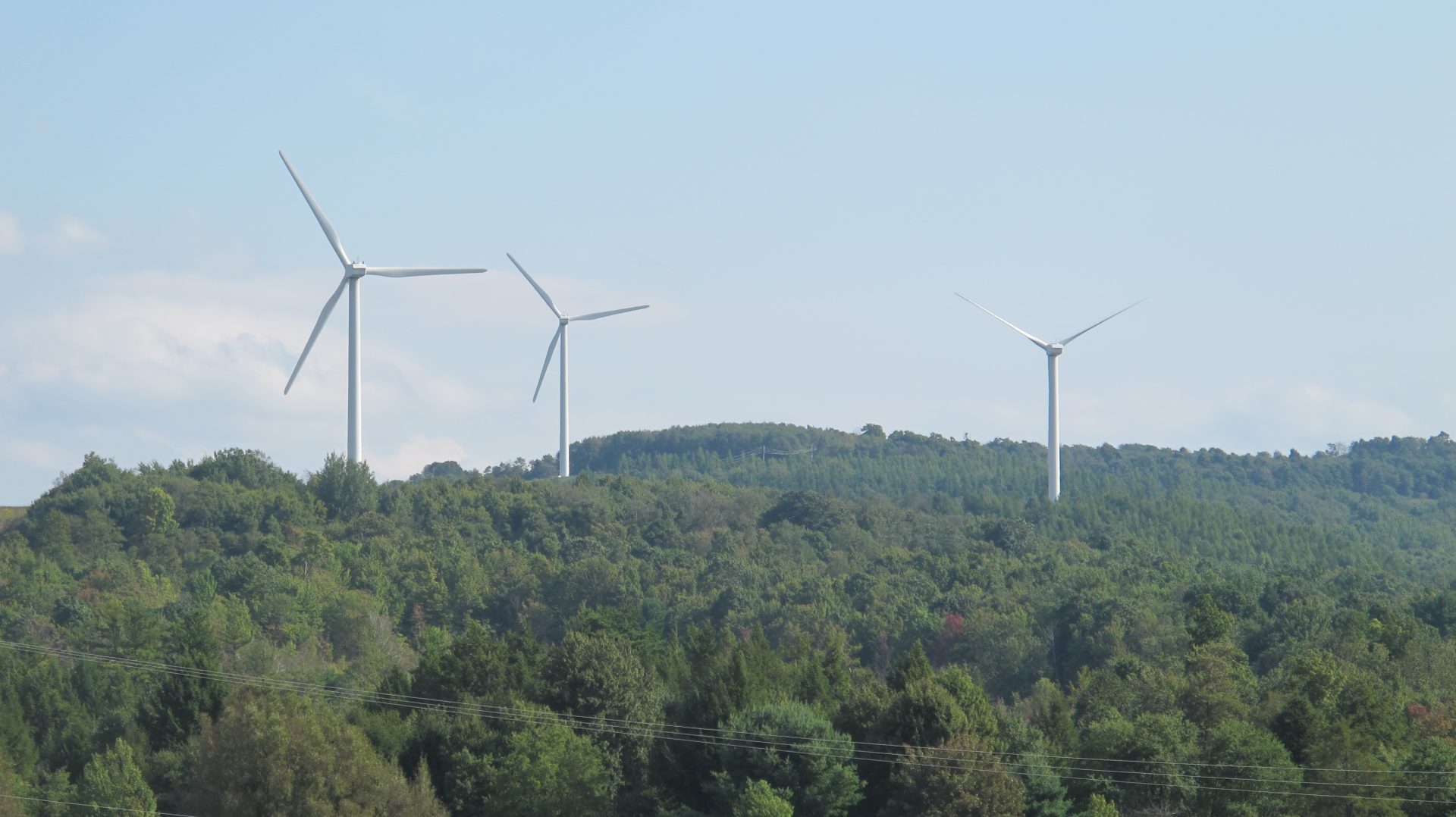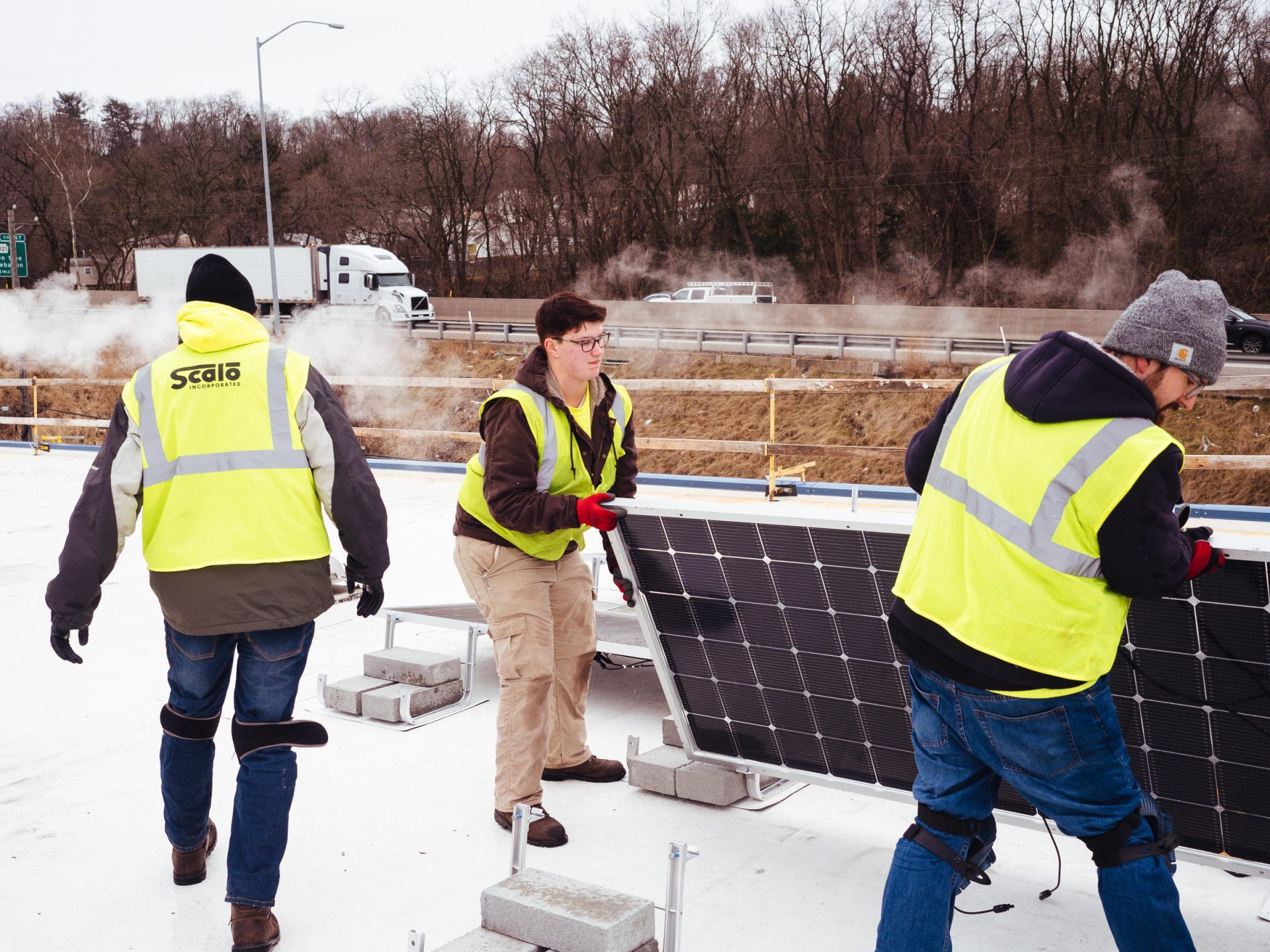
Work on the second phase of the University Area Joint Authority's solar array project outside of State College.
Anne Danahy / StateImpact Pennsylvania


Work on the second phase of the University Area Joint Authority's solar array project outside of State College.
Anne Danahy / StateImpact Pennsylvania

Anne Danahy / StateImpact Pennsylvania
Work on the second phase of the University Area Joint Authority's solar array project outside of State College.
(Pittsburgh) — Although President Joe Biden’s actions on climate change have stirred anxieties about job loss in energy-producing states like Pennsylvania, a new report predicts that plans like Biden’s could create roughly a quarter-million jobs annually in the Commonwealth. And within hours after the report’s release, local officials announced a small but symbolic down payment on green energy investment.
The 243,000 clean-energy jobs that could be created each year over the next decade in Pennsylvania “are jobs across the board,” said Robert Pollin, a professor at the University of Massachusetts Amherst and one of the study’s authors.
“We’re looking at jobs for carpenters, machinists, environmental scientists, secretaries, accountants, truck drivers, roofers, agricultural labor,” Pollin said, referring to positions that would be required to achieve higher energy efficiency standards, develop new products and infrastructure, and restore land that’s been used for mining and drilling.
UMass Amherst’s Political Economy Research Institute released the report Thursday, a day after Biden signed a round of executive orders that aim to supercharge the country’s efforts to curb carbon emissions.
Co-authored by Pollin, the report quantifies the potential impact on Pennsylvania jobs of a clean energy strategy developed by ReImagine Appalachia, a coalition of progressive policy and environmental groups. The coalition seeks to facilitate a “just transition” to a clean energy economy in Pennsylvania, Kentucky, Ohio, and West Virginia, whose economies have traditionally depended on extraction-based fossil fuel industries. ReImagine Appalachia’s blueprint strives to ensure those states can generate well-paying jobs during a decades-long shift to carbon-free energy.

Courtesy: Pennsylvania Turnpike Comission
Wind turbines along the Pennsylvania Turnpike.
Midstate counties considered a part of Appalachia are Columbia, Juniata, Mifflin, Northumberland, Perry, Schuylkill, Snyder and Union.
With adequate funding over the next 10 years, the plan would fuel the creation of an average of 162,000 jobs annually in clean energy and 81,000 positions a year in public infrastructure, manufacturing, land restoration, and agriculture, according to Thursday’s study.
The study estimates that an average annual investment of $31 billion would be needed from both the public and private sectors. During the presidential campaign, Biden pledged to invest $2 trillion in such efforts, with the goal of eliminating carbon pollution from the power sector by 2035 and from the entire U.S. economy by 2050.
“The level of funding necessary [is] a lot. But it’s 3 percent of [the] GDP of the state … So it’s affordable,” Pollin said. And he noted that the employment gains his report predicts would amount to about 4 percent of the state’s workforce.
“So if you’re looking at an economy which has a 7 percent unemployment rate [similar to Pennsylvania], these programs lower the unemployment rate to 3 percent – that’s how dramatic it would be,” Pollin said.
Powering up
Allegheny County took a modest step toward that goal on Thursday, when County Executive Rich Fitzgerald announced that, starting as early as mid-2023, all county-owned facilities will draw energy from a low-impact hydropower plant located on the Ohio River.
Fitzgerald called the move a “long-term investment in how we light and power our facilities using our natural resources without using fossil fuels.” He said it comes during a “landmark week,” during which the county met federal air quality standards for the first time ever.
Boston-based hydropower company Rye Development will build and run the hydro facility. The county entered into a 35-year power purchase agreement with the firm.
Each year during the lifetime of the contract, the county will offset emissions equivalent to the entire electrical consumption of more than 3,400 households, according to a statement from the county. Rye CEO Paul Jacob said the hydro facility will produce enough energy to supply customers other than the county, too.
The facility will be located at the Emsworth Locks and Dams and will cost approximately $50 million to construct over roughly two years, Jacob said during a virtual news conference with Fitzgerald. The project will be funded privately through a partnership with the investment outfit Climate Adaptive Infrastructure, Jacob said.
“Southwestern Pennsylvania [has] tremendous resources because all of these rivers were dammed up for transportation and are largely still used for transportation. And that means that there’s basically wasted energy flowing through each of those dams,” Jacob said.
“Powering a dam like [Emsworth’s] is … the low-hanging fruit.”
Construction of the hydro facility is expected to create 150 to 200 temporary jobs, according to Fitzgerald. Jacob estimated that, following construction, the facility will employ one to three people full-time. But he noted that it will also indirectly employ people who must remove debris from the river each day and those who must periodically refurbish plant equipment.

Jared Murphy / WESA
Workers install solar panels on the roof of Global Links, a medical relief nonprofit, in Green Tree, Pa., on Wednesday, Feb. 5, 2020.
Not an ‘either-or’ situation
Green infrastrucutre projects can show that protecting the environment and investing in the economy do not present an “either-or” proposition, Democratic state Rep. Sara Innamorato said. “It’s a ‘yes-and.’ So yes, we can end our reliance on fossil fuels in manufacturing and energy production – and create family-sustaining union jobs that are open to all.”
“A clean, renewable energy future,” she continued, also promises to benefit “rural, poor, Black, and brown and indigenous communities that have been harmed by an industry and left behind by our government in the past.”
Pollin acknowledged that, with average salaries of $94,000, fossil fuel workers tend to out-earn their counterparts in clean energy sectors, who make $70,000 a year on average. Unionization, he said, is key to fighting for better pay and work conditions in the clean economy.
Pennsylvania AFL-CIO President Rick Bloomingdale agreed that unions are a critical factor. He noted, however, that fossil-fuel workers often mistrust plans such as those promoted by Biden and ReImagine Appalachia.
“Having been through some major changes in industries in Pennsylvania, whether it’s the steel industry or coal mining,” the labor leader said, “we’re always a little worried … when we use the words ‘just transition.’”
But Bloomingdale praised the report released Thursday, because it urges policy makers to ensure displaced workers can transition into new well-paid careers while still receiving health care coverage, pension guarantees, retraining support, and other protections.
The report finds that about 64,000 Pennsylvania workers are employed in fossil fuel-based industries such as natural gas drilling, coal mining, and supporting activities. Each year between 2021 and 2030, the report predicts, about 1,800 of those workers will lose their jobs while another 1,000 will voluntarily retire.
Rob Bair, business manager of an electrical workers union in Harrisburg, cautioned that shifting to a clean economy is a generational project.
“We can’t just flip the switch and say we’re going to be solar in the next two years and have all our energy,” Bair said. “But what ReImagine Appalachia does in this discussion is also give us time to put a plan together and say, ‘These industries are changing, and we’re not going to just walk away. We’re not going to leave people hanging.’”
StateImpact Pennsylvania is a collaboration among WITF, WHYY, and the Allegheny Front. Reporters Reid Frazier, Rachel McDevitt and Susan Phillips cover the commonwealth’s energy economy. Read their reports on this site, and hear them on public radio stations across Pennsylvania.
(listed by story count)
StateImpact Pennsylvania is a collaboration among WITF, WHYY, and the Allegheny Front. Reporters Reid Frazier, Rachel McDevitt and Susan Phillips cover the commonwealth’s energy economy. Read their reports on this site, and hear them on public radio stations across Pennsylvania.
Climate Solutions, a collaboration of news organizations, educational institutions and a theater company, uses engagement, education and storytelling to help central Pennsylvanians toward climate change literacy, resilience and adaptation. Our work will amplify how people are finding solutions to the challenges presented by a warming world.